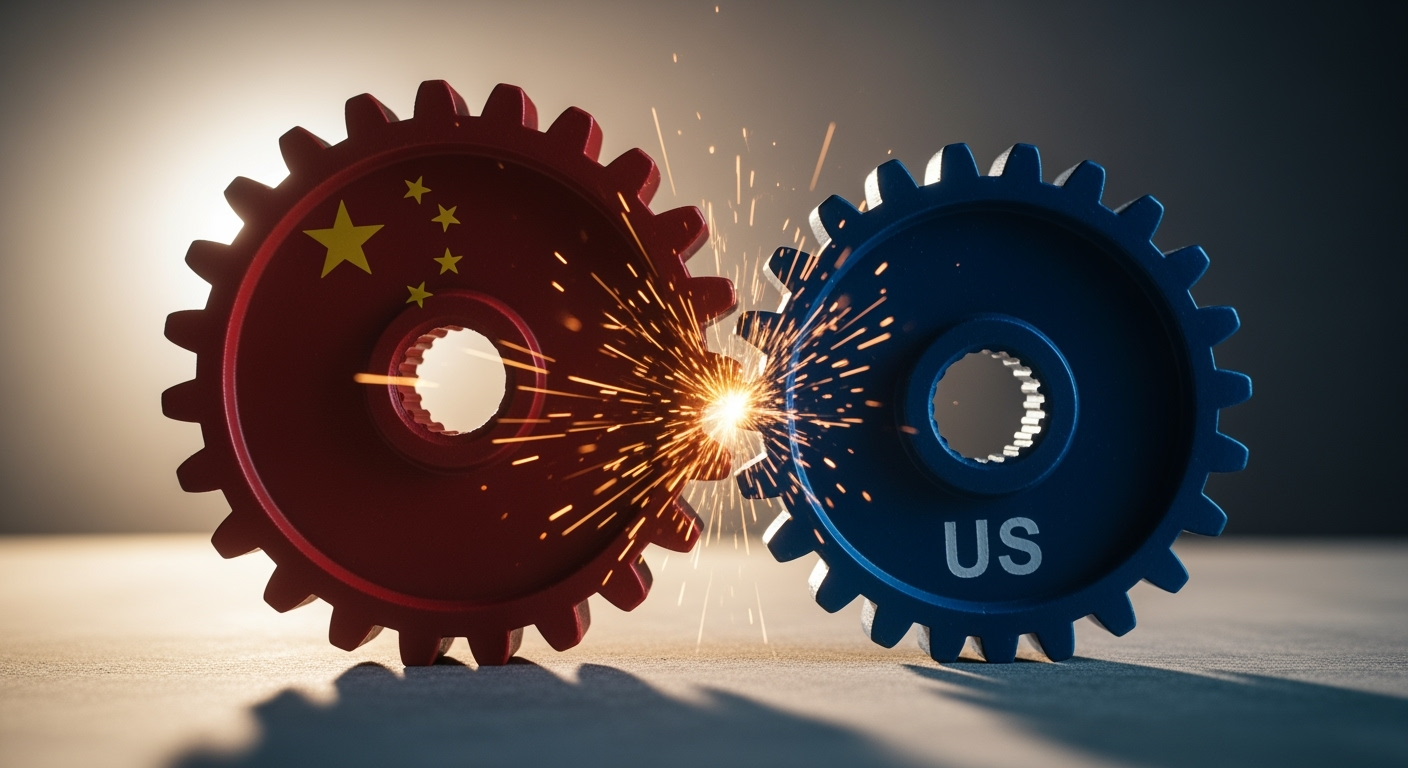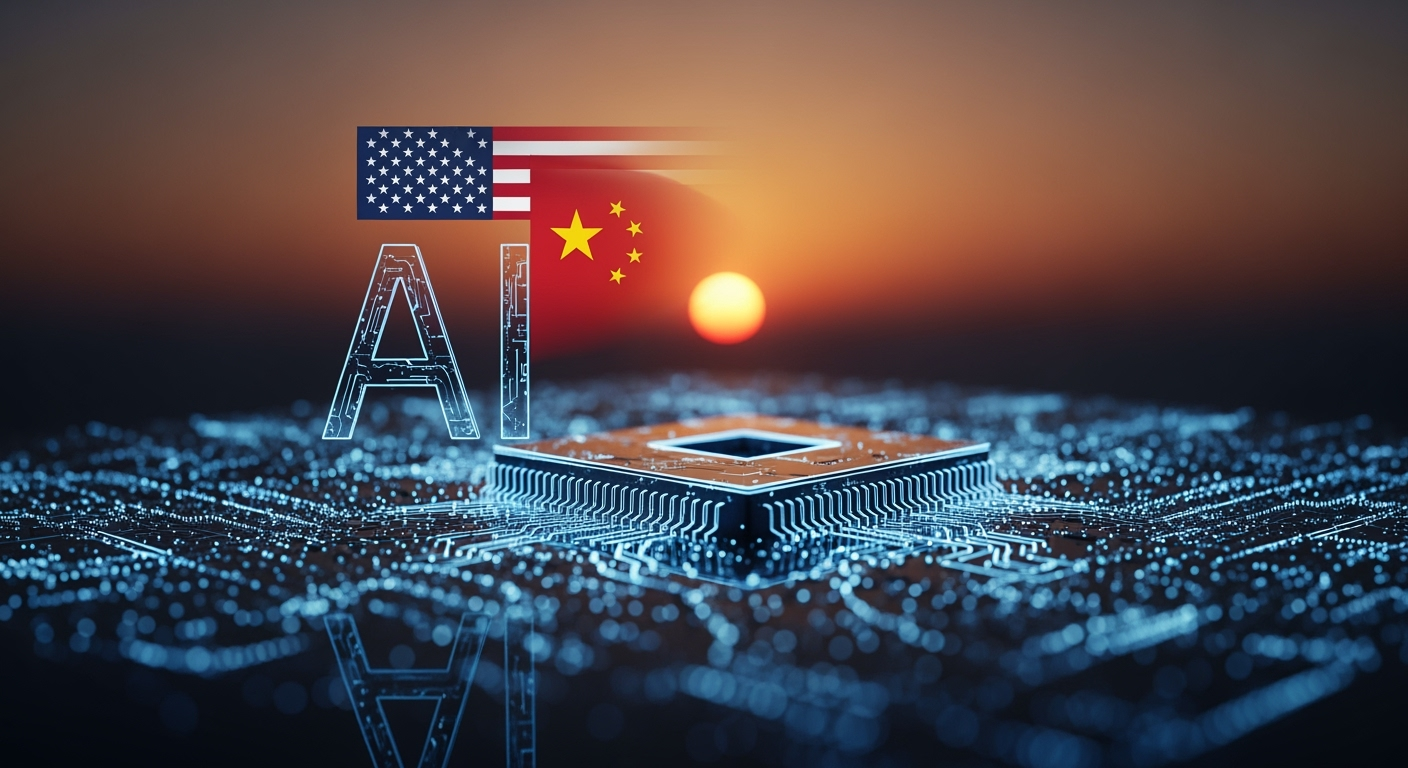Related Articles

China Intensifies Economic Pressure on U.S. Amid Escalating Trade War




Beijing is executing a comprehensive, state-driven strategy to rapidly ascend as the world's preeminent power in artificial intelligence, directly challenging the long-standing technological supremacy of the United States. This strategic push, enshrined in national plans and fueled by massive investments, seeks to transform China into a global AI leader by 2030, reshaping the geopolitical and economic landscape of the 21st century. The competition extends beyond technological innovation, influencing global governance, digital standards, and international alliances, as both nations vie for control over the future of this pivotal technology.
Central to China's ambition is the "New Generation Artificial Intelligence Development Plan," unveiled in 2017, which explicitly outlines the goal of making China the global leader in AI by 2030. This comprehensive plan underscores AI's critical role in boosting economic growth, enhancing social services, and strengthening national security. Unlike the predominantly private sector-driven innovation model in the United States, China's approach is highly centralized and state-led, integrating AI development into its broader economic, military, and technological objectives. The Made in China 2025 initiative further emphasizes reducing reliance on Western technology by bolstering domestic semiconductor production and AI infrastructure, aiming for self-sufficiency across the entire AI technology stack, from chips to applications.
Government backing manifests in significant financial commitments. In 2025 alone, China's capital expenditure on AI is projected to reach between 600 billion yuan (approximately $83.8 million) and 700 billion yuan ($97.8 billion), a 48% increase from 2024. Government investment is expected to account for up to $56 billion of this spending, with major internet companies contributing substantially. This coordinated strategy fosters an environment where innovations can rapidly scale with state support. In January 2025, China launched an $8.2 billion National AI Industry Investment Fund, supplementing existing funding mechanisms such as direct grants, public-private partnerships, and investments in AI infrastructure at federal, provincial, and local levels. Local governments, from Shanghai to Shenzhen, have established state-backed AI labs and pilot zones to accelerate research and talent development.
China's robust and dynamic AI ecosystem is characterized by a synergistic relationship between big tech companies, startups, and academic institutions. Major Chinese technology firms like Baidu, Alibaba, Tencent, and ByteDance are at the forefront of AI innovation, alongside a new generation of "AI Tigers" such as Zhipu AI, Baichuan, Moonshot AI, and MiniMax. These companies have achieved significant breakthroughs in various AI domains. For instance, the Beijing Academy of Artificial Intelligence (BAAI) unveiled WuDao 2.0 in 2021, a multimodal AI model with 1.75 trillion parameters, which surpassed OpenAI's GPT-3 at the time. Huawei's Pangu series, also introduced in 2021, focuses on industry-specific applications rather than general-purpose use.
More recently, Chinese startups have garnered international attention for their efficient and competitive AI models. DeepSeek, founded in 2021, released DeepSeek-R1 in January 2025, a large reasoning model that achieved performance comparable to leading Western models while requiring dramatically fewer resources for training and inference, utilizing a Mixture-of-Experts (MoE) architecture. This breakthrough challenged assumptions about the necessity of massive capital expenditure for effective AI development. Other notable advancements include Baidu's Ernie 4.0, which claims to rival GPT-4 in complex query understanding, and Alibaba's Qwen models, which have gained over 90,000 enterprise users on its cloud platform. ByteDance's Doubao chatbot has surpassed Baidu's Ernie BOT in downloads and active iOS users, offering cost-effective large language models (LLMs) to enterprises. By April 2024, the Chinese government had approved 117 generative AI models.
A critical advantage fueling China's AI development is its vast data pool. The nation's population of over 1.4 billion people and 1.1 billion mobile app, e-commerce, and social media users provides an immense volume of data crucial for training AI models at an unmatched scale. This rich data environment, combined with aggressive state-backed power expansion for data centers, provides the essential computing power for large-scale AI models.
Recognizing the indispensable role of human capital, China is aggressively investing in AI talent development. The Ministry of Education initiated a nationwide plan in 2024 to implement AI education across schools by 2030, aiming to equip the future workforce with essential AI skills. More than 500 universities now offer AI-related majors or have dedicated schools, with institutions like Tsinghua University and Renmin University of China expanding AI in their enrollment plans for 2025. The Ministry of Education also promotes university-enterprise collaboration, emphasizing practical, interdisciplinary training to meet industry demands. This includes programs focused on AI algorithms, machine learning, natural language processing, computer vision, and robotics. China also seeks to attract global talent, with plans to establish AI academies and proposals to treat foreign AI experts and students as Chinese citizens without discrimination. McKinsey & Company forecasts that China will require 6 million AI professionals by 2030, highlighting the ongoing push to close potential talent gaps.
Beyond its borders, China is strategically deploying its AI advancements to increase its global influence. Beijing is leveraging open-source models, such as DeepSeek R1 and Moonshot AI's Kimi K2, to appeal to countries in the Global South. These adaptable, low-cost alternatives to proprietary models favored by American firms are finding significant uptake, particularly in health and public sectors. This open-model strategy allows local developers to create industry-specific derivatives, framing China as an enabler of AI empowerment. This approach contrasts with the U.S. focus on export controls and closed AI ecosystems, and it signals China's intent to influence international technology governance, advocating for a cooperative and inclusive model. Premier Li Qiang proposed the creation of the World Artificial Intelligence Cooperation Organization in July, aiming to give China a central role in setting global AI rules, emphasizing inclusivity and positioning AI as a shared global resource.
The intensifying rivalry has led to a "bifurcated technological landscape," with competing standards and ecosystems emerging. The United States has implemented stringent export controls and trade restrictions, particularly on advanced semiconductors, to limit China's access to critical AI technologies. These measures are intended to impede China's AI development and safeguard U.S. national security by preventing the transfer of technologies that could enhance China's military and surveillance capabilities. However, these restrictions have, in some instances, catalyzed China's drive for self-sufficiency, leading to accelerated domestic innovation. Chinese firms, despite hardware challenges, have achieved significant breakthroughs by optimizing less powerful hardware, demonstrating resilience and progress in local chip manufacturing.
The rapid ascent of China's AI capabilities raises concerns, particularly regarding ethical implications and national security. China's AI development has significantly impacted society, including in the socio-economic, military, and intelligence spheres. AI-driven facial recognition technologies are extensively used by the public security sector for surveillance and law enforcement, with concerns raised by human rights organizations about their application in regions like Xinjiang and export to other countries. China's national AI strategy also reflects nationalist policies, including military-civil fusion, aiming to make the People's Liberation Army a world-class fighting force. While the Chinese government has articulated a stance on AI ethics and governance, emphasizing responsible development and data privacy, these are often framed within the context of state control and surveillance priorities.
China's concerted effort to challenge America's AI dominance represents one of the most significant technological and geopolitical shifts of the 21st century. Through strategic national planning, substantial state investment, rapid innovation by leading tech companies, a vast data advantage, and robust talent cultivation programs, China has positioned itself as a formidable competitor. While the U.S. retains strengths in frontier AI models and private sector investment, China's focus on efficient, real-world applications and its open-source strategy for global influence present a compelling alternative vision for AI development. This competition is not merely about technological superiority; it is a contest over global influence, the future of digital standards, and the fundamental architecture of the internet, with profound implications for international relations, economic power, and national security in the decades to come.